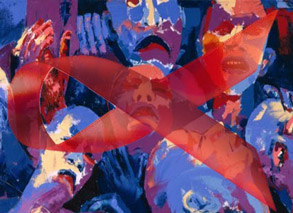 Apr. 10, 2025
Apr. 10, 2025
Weather
The Jingpo ethnic minority
2009-08-07 10:57 BJTPre-1949 Life
Before China's liberation in 1949, there were primitive commune vestiges in Jingpo society. An area ruled by a "shanguan" was a rural commune. Each village in the commune was headed by a tribal chief who assisted the "shanguan" in administrative affairs. Even though private ownership had taken root, the waste land and mountain slopes within the boundaries of the rural commune belonged to all its members, who had the right to reclaim a piece of land and would forfeit it if left in waste again. Paddy fields, however, were either privately owned or tilled permanently by certain people. Often, noblemen or headmen, taking advantage of their privilege to allocate land, gradually gained more paddy fields for themselves, or even took paddy fields away from village members by force. This was followed by the selling, buying, mortgaging and leasing of paddy fields. At the time of the liberation of the Jingpo areas in 1950, landlords constituted one per cent of total Jingpo households, and rich peasants two per cent. The two groups had possession of 20 to 30 per cent of all paddy fields and 20 per cent of farm cattle. Of the common Jingpo peasants, only 15 per cent owned some paddy fields and farm cattle, while the majority were poor laborers with little land and few farm cattle and tools. Apart from being exploited in the way of land and cattle rent, usurers' interest rates and ultra-low pay, poor peasants each year had to pay a certain amount of "official rice" to their "shanguan" and do three to five days of corvee.
The basic unit of Jingpo society was the small family of husband and wife. Some "shanguans" and rich peasants practiced polygamy. The family was headed by the father. A family with only daughters might have a son-in-law to live with it, but the son-in-law did not change his surname and his children would take his surname instead of that of his father-in-law. A childless family could adopt a son, who was required to support his foster parents and had the right to inherit their property. Elderly people without children were usually looked after by their relatives. The Jingpo family retained the system of inheritance by the youngest son. While the eldest son would set up a separate family after marriage, the youngest son would remain to support his parents and inherit most of their property. The youngest son had a definitely higher status than his brothers. Women had a low status in Jingpo society.
The Jingpos practiced a hierarchical intermarriage system, that is, intermarriage between "shanguan" families and between common peasant households. While young people could freely socialize, their marriage, often involving many betrothal gifts, was arranged by their parents. Bride snatching was a common occurrence. When people died they were buried in the ground except for those who died an unnatural death. They were without exception cremated and their ashes buried.
Jingpo people lived in thatched cottages of bamboo and wood except a few "shanguans" and headmen, who had houses of brick and tile. The cottages, oblong in shape, had two storys. The lower floor, about one meter above the ground, is for keeping animals, while the upper floor, usually partitioned into four to ten rooms with bamboo walls, is the living quarters for family members. In the middle of every room is a fireplace, around which people sleep. Every seven or eight years, cottages have to be rebuilt. Rebuilding, having the help of all villagers, is completed in several days.
Rice is the staple food, although maize is more important in some places. Vegetables, beans, potatoes and yams are grown in cottage gardens. Jingpos also gather wild herbs and fruit as supplementary food.
Jingpo men usually wear black jackets with buttons down the front and short and loose trousers. Elderly people have a pigtail tied on top of their head and covered with a black turban. Young people prefer white turbans. Jingpo men going out invariably wear long knives on their waist or take rifles with them. All carry elaborately-embroidered bags containing items such as areca and tobacco. Jingpo women usually wear black jackets with buttons down the front middle or front left. Matching the jacket is a colorful knitted skirt and a woolen shinguard. Women like wearing silver ornaments.
Jingpos are good singers and dancers. Group dancing, their major dancing form, reflects their life, work, war and sacrificial rites. It sometimes involves more than 1,000 people, their singing reverberating in nearby mountain valleys. Jingpo musicians use wooden drums, "elephant-leg" drums, gongs, cymbals and bamboo flutes.
Jingpos used to practice fetishism, believing that spirits live in the sun, moon, birds, animals, boulders and trees, bringing fortune or misfortune to human beings. As a result, superstition dominates their lives and taboos abound. Sacrificial rites accompanied sowing, harvesting, disease, weddings, funerals and combat.
 Mail
Mail Share
Share Print
Print


 Video
Video









 2009 China Central Television. All Rights Reserved
2009 China Central Television. All Rights Reserved